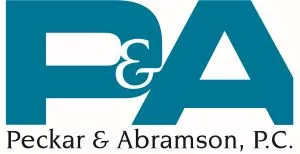Hopefully, this is simply a rhetorical question. As the reality of global warming, or climate change, sinks in, it is obvious that many aspects of the global economy, if not fueled by green, will have green components. Focus on climate change has had the ancillary effect of highlighting other major environmental issues and problems that have been well-recognized in scientific and regulatory circles, but not as much in the general media. There is a national and global focus on the sustainability of resources. In 2007, the EPA stated that the United States was shifting to a "green culture in which 300 million citizens are embracing the fact that environmental responsibility is everyone's responsibility." The practical manifestation of these environmental issues ranges from alternative fuels, to ecosystem approaches to environmental management and assessment, waste reduction and recycling, the preservation of wetlands and water resources, as well as the prevention of stormwater pollution - and finally, to sensible planning and green building.
In the United States, there has been recent major litigation on emissions and global warming issues. Individual states have also proceeded to adopt their own regulations to control greenhouse gas emissions. For example, in 2006, California passed the California Global Warming Solutions Act of 2006 (AB 32) which established the first in the world comprehensive program of regulatory and market-based mechanisms to achieve a measurable reduction in greenhouse gases. Under the law, the rate of greenhouse gas emissions in the state must be cut to the 1990 level by 2010 a 25% reduction. The federal government is also considering climate change legislation and a carbon cap and trading system.
Green Construction
One of the most evident examples of environmental values being woven into the fabric of everyday life is the green building movement. While the concept of "green" is really not new, the word is now being used to promote earth-friendly development and construction. This essentially means the practice of selecting and developing a site, and building a building, with considerations of efficient and non-wasteful construction techniques and debris removal, energy efficiency in design and construction and in the final building product, renewable building materials, reuse of resources, enhanced indoor air quality, and even enhanced outdoor air quality, including the reduction of a project's "carbon footprint."
While implementing green construction techniques is mostly voluntary, there exist some "green" standards and much guidance, and more standards and regulations are being developed on a regular basis. An initial benchmark and framework currently exists in the form of the United States Green Leadership in Energy and Design (LEED) guidelines - a structure established by the U.S. Green Building Council (USGBC).
LEED buildings can attain a certain level of certification, or ranking, based upon the numbers, and types, of green principles or techniques that are incorporated into the selection and development of a site and the design and building of a structure. Points are awarded and are based on the inclusion of green principles and criteria from sustainable site practices, such as erosion and sedimentation control plans and "green infrastructure" for reducing combined sewer overflow (e.g. green rooftops), to designs that ensure energy efficiency, the use of green materials and enhanced habitability. According to the USGBC, the goal of green design is "To significantly reduce or eliminate the negative impact of buildings on the environment and on the building occupants; green building design and construction practices address: sustainable site planning, safeguarding water and water efficiency, energy efficiency, conservation of materials and resources, and indoor environmental quality."
There are huge implications attendant to the construction industry going green. According to the U.S. Environmental Protection Agency, the construction market accounts for greater than 14% of the U.S. gross domestic product. According to the USGBC, the products and services market for green building was expected to exceed $12 billion in 2007. Two billion square feet of commercial building space have been registered or certified under LEED criteria. The USGBC consists of 8,957 member organizations - including Peckar & Abramson - and 91,000 active individuals. There are approximately 6,400 LEED registered projects, spanning all 50 states.
Green construction is more than a trend. It is viewed as the prototypical "win-win" situation. Green building is a movement, an industry shift with staying power. There is an expanding infrastructure to ensure that buildings are built green. States and local governments are incorporating green requirements into their regulatory and permitting structures. Clients are demanding that sustainability concepts be incorporated into a building's active life cycle. People want to stay, work and live in green buildings. And contractors need to learn how to build green in order to stay competitive.
Green buildings have such broad-based appeal for several reasons. First, data indicate that in cities, buildings, rather than vehicles, account for fifty to seventy percent of greenhouse gas emissions. Buildings also account for thirty-six percent of the U.S.'s electrical consumption. Buildings use more than 13% of all potable water in the U.S. And the EPA has estimated that over 180 million tons of building-related construction and demolition debris are generated in the U.S. each year. Therefore, many states and municipalities have built incentives into their approval processes to encourage green construction. The incentives range from expedited permits and zoning approval, to financial incentives. Moreover, in many cases, states and cities are requiring green construction on public projects. For example, last year the Boston Zoning Commission approved several amendments to the Boston Zoning Code to require all projects over 50,000 SF to be designed and planned to meet the "certified" level using the LEED system. Additionally, numerous funding sources are available to "build green," ranging from federal, state and local grants and loans, to personal and corporate tax credits and exemptions.
This administrative and regulatory recognition of green principles is a growing reality. And it is highly likely that many green principles will be incorporated into most standard building codes. That is already being done in various locations. For example, the Florida Building Commission, in September 2007, organized a Green Building Workgroup to develop recommendations for a model efficiency ordinance for residential development. The Commission, with university collaboration, will conduct additional research and support by identifying and soliciting input from local governments and other organizations with current and developing initiatives for energy conservation, green building and sustainable development, including but not limited to, energy and water conservation and hurricane resistant buildings and communities.
Environmental organizations are also focusing on the construction industry as a component of the war on greenhouse gases. No longer are these groups simply focusing on industrial pollution. In California, several cases were brought in 2007 by a non-profit organization, the Center for Biological Diversity, challenging the legitimacy of environmental assessment reports that did not analyze the effects of certain proposed developments on global warming.
Litigation and Allocation of Risk
Will the green building movement lead to more litigation - environmental, construction or otherwise? Certainly the potential is there. There are many issues related to the effects of global warming, such as a reduction in water supply, increased fire risk, more intense storms, etc. that could spawn ancillary lawsuits beyond the landmark suits to force the government to regulate greenhouse gases. One example is a lawsuit filed in 2007 by California Attorney General Jerry Brown against San Bernardino County under the state's environmental quality act, for failing to account for the impacts of global warming in the County's 25-year growth plan. If such suits to consider the effects of construction projects on global warming succeed, developers and builders will need to develop a whole new language- how to reduce the carbon footprint of a building, or highway or other project, by, in part, using "green" materials, recycling, building energy efficient buildings, requiring contractors and sub-contractors to utilize green principles (e.g. reduction of waste; electric vehicles, etc.), reduction of traffic and reduction of water. If these things are not considered, the result could be litigation on the scale of major zoning litigation - not a welcome prospect on a construction project.
Further, as owners, builders and end users demand green buildings and have increased expectations, construction litigation may take on a new flavor. Owners paying more for a green building may expect a significantly higher standard of construction, efficiency and operation and may, as a result, place a great degree of reliance on representations made by the architect, general contractor and the trades. If an architect or a contractor is making certain representations in a contract to build a green building by utilizing certain types of materials, by using certain insulation or committing to water reuse designs and systems, etc. and the final product does not meet those commitments, the potential for litigation will be a reality. While this may not differ from typical construction litigation over unmet contractual expectations or design defects, certainly the subject matter, and the nuances, will be somewhat different. There will be greater emphasis on more than just bricks, mortar and delays. Experts will need to be retained to analyze whether the stormwater management system is effective and consistent with the design and contract, whether the energy efficiency of the building is as promised, etc. As more novel materials are utilized in building construction, there will be questions whether such materials meet the durability standards expected and that contractors and developers warrant. Further, it is likely that there'll either be new types of subcontractors, or existing subcontractors will have to quickly become familiar with the types and sources of material that are considered "green." Hence, there could be substantial litigation between general contractors and subcontractors regarding promises by subcontractors about their green expertise and capacity to deliver and install green materials. And, who is contractually responsible if a building fails to attain the promised LEED certification? Certainly with a broad-based definition of "green" and the relative lack of specific standards or specifications, the possibility of litigation as a result of failed expectations is increased.
Predictably, with potential "green risk" come entities willing to insure that risk. For example, as early as 2006, Fireman's Fund Insurance Company introduced "Certified Green Building Re- placement and Green Upgrade" coverages, specifically tailored to green commercial buildings. The coverage for LEED certified buildings offers a discount due to lower risk factors. While conventional insurance policies only cover the cost to restore a building to its original condition, according to Fireman's Fund, its Green Building Replacement, Green Upgrade, and Commissioning coverages allow commercial property owners and managers to rebuild and replace with green alternatives such as non-toxic, low volatile organic compounds (VOC) paints and carpeting, Energy Star-rated electrical equipment, water efficient interior plumbing and commissioning-engineering inspection of systems such as HVAC.
Conclusion
There is no question that developers and architects, as well as general contractors/ construction managers and the trades, understand the rising demand for green. They are touting their understanding of the LEED system and green construction as marketing tools. But they must be able to deliver on the green promise. It is one thing to promote and promise green expertise and the ability to design and build green, but another thing to deliver on that promise. The failure to do so could have more wide-reaching repercussions than litigation over the use of green components in an individual project. In Part II of this series, we will explore the development of a green risk management plan.
The content of this article is intended to provide a general guide to the subject matter. Specialist advice should be sought about your specific circumstances.

